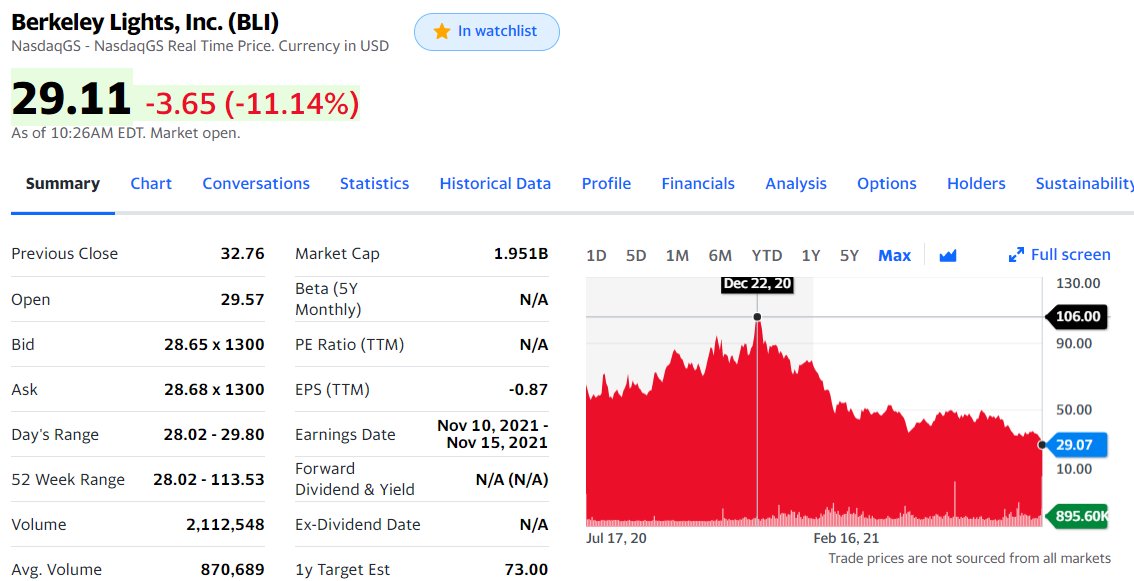
In #biotech #stocks news, one of the #LiquidBiopsy #CancerDx stocks in my list is $BNR Burning Rock, a company with presence mainly in Asia that started trading in the NASDAQ a while ago. It is now at lowest levels having recently gone below the $20 mark 

At around $2B valuation, they are still in the top 10 of companies in the #LiquidBiopsy #CancerDx field: bit.ly/liqbiopsy 

Notice that #GrailBio is still marked at $2B valuation in my table: this is not the $8B figure that #Illumina is intending to buy it at, but I'll wait until the acquisition is completed (and not legally challenged by the US/EU authorities) before updating the value in the table.
Other important companies by valuation are $EXAS Exact Sciences, which are the people behind Cologuard for colorectal cancer screening, as well as $NTRA Natera, with their Signatera assay, Caris, Invitae, and Neogenomics Labs.
For some of these entities, it's difficult to weigh how much are they focused on #LiquidBiopsy #CancerDx, which is what my table is about, but I thought they needed to be added to the list as their omission would make the list incomplete. They may also be possible players in ...
... future acquisitions (I haven't got any inside info, just speculating). Neogenomics has recently made moves to strengthen their position in #CancerDx, by acquiring #Inivata among other companies. Same for $EXAS Exact Sciences, by acquiring Thrive (still in the list).
Exact Sciences also acquired Base Genomics, a company that spun out of Oxford University with the TAPS bisulfite-free technology to assay 5mC or 5hmC from short DNA molecules and low input amounts (perfect for #LiquidBiopsy). It will take a while for $EXAS to digest these ...
... acquisitions, both strategically within the company and as products. It takes time to obtain approval for a #CancerDx assay, let alone to do the assay development in the first place.
Final usual caveat that I believe there is a #tech #bubble in the markets that is bound to burst at some point. So I don't recommend anyone to buy any of the stocks in my list. I tweet about them to describe who they are and what they do, but they are IMO all overpriced.
More at bit.ly/biotech-stocks
• • •
Missing some Tweet in this thread? You can try to
force a refresh






